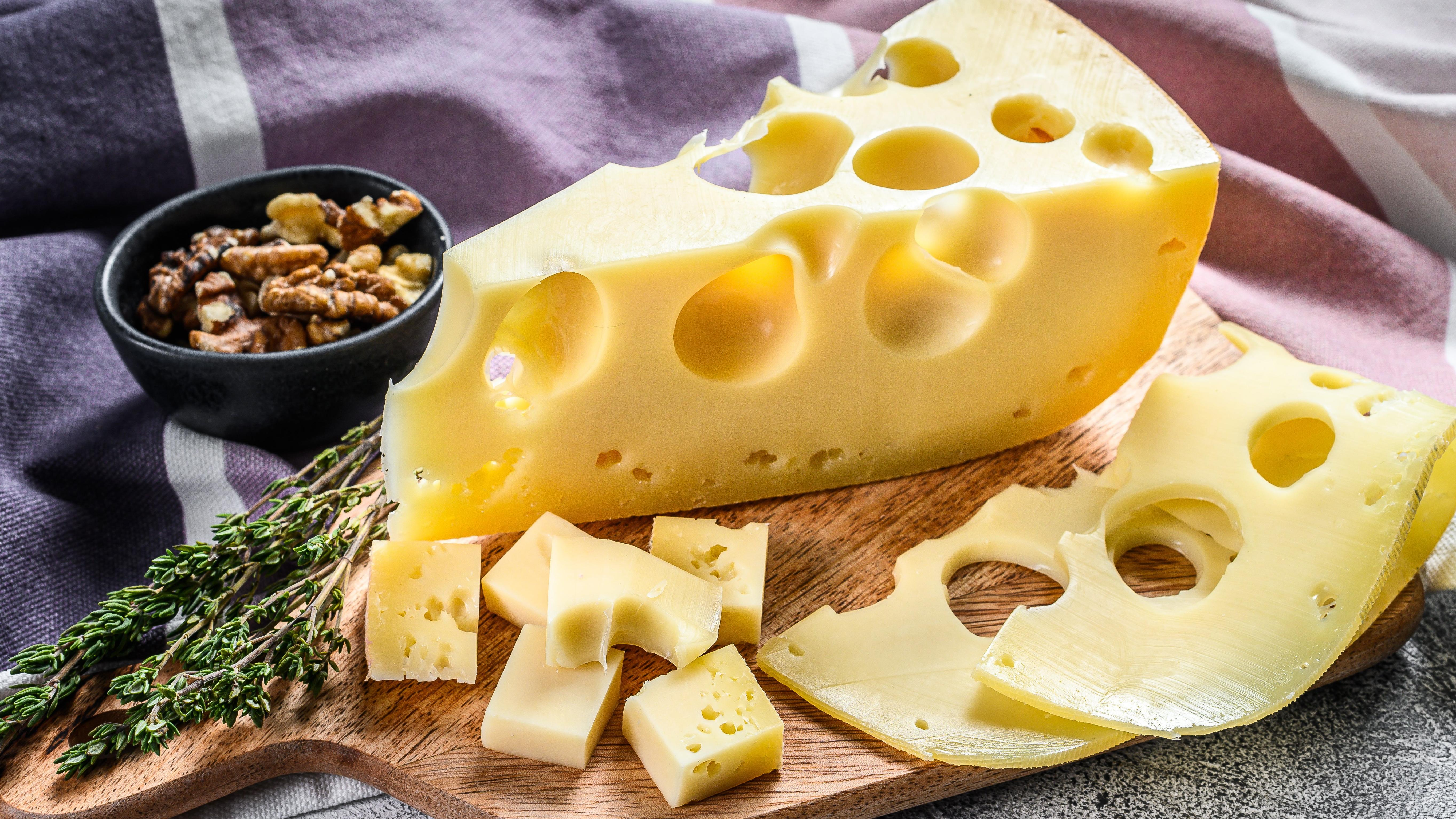Why The Size Of Swiss Cheese Holes Matters
The cheese holes do matter but maybe not for the reasons you think.
Just like wondering why the sky is blue, plenty of us have looked at a slice of holey Swiss Cheese and wondered, "What's up with that?"
The only way to put our curious minds at ease is to ask an expert, but not just any expert. For this inquiry we require more than just a cheese connoisseur or cheese whiz. This is a lesson in cheese knowledge that can only be given by a master.
Bruce Workman of Edelweiss Creamery is a Master Cheesemaker with 12 master certifications. With decades of experience, and some award winning Swiss cheese, Workman finally helps us understand what's up with those cheese holes.
Why does Swiss cheese have holes in it?
For starters, our cheese expert knows that the "holes" in Swiss are actually referred to as "eyes." That terminology definitely makes for less childish giggling as I write, so thank you for that.
Workman writes in an email to The Takeout, that the eyes appear "due to the starter culture of bacteria added to the milk at the start of cheesemaking." The American Farm Bureau Foundation for Agriculture writes that at the beginning of the cheesemaking process, milk is first pasteurized to kill harmful bacteria and then a starter culture is added to the milk. This helpful bacteria helps the milk break down.
Workman says the particular strain of bacteria used to make Swiss Cheese is Propionibacter shermani, which consumes the lactic acid in milk and releases bubbles of carbon dioxide gas. Those bubbles are what create the eyes of the Swiss cheese. As a bonus, Workman notes, "Because the bacteria eat lactic acid, those who are lactose intolerant can eat Swiss cheese." You're welcome, my dairy-adverse children.
Workman goes on to explain that the eyes of a Swiss cheese vary in size based on the length of time it spends in the curing facility. For example, the Emmentaler Swiss cheese from Edelweiss Creamery is a large form, aged Swiss which means the eyes are bigger whereas a baby Swiss requires less ripening time and thus produces smaller eyes.
How do the holes in Swiss cheese affect taste?
As it goes with most food qualities, Workman says there's debate about whether or not the "holes" in Swiss cheese matter to flavor.
"Personally, I don't think the holes make the flavor. If you have a blind Swiss, though, that means something went wrong in the process of creating it," says Workman. In case it isn't obvious, a blind Swiss is a Swiss Cheese that doesn't have any holes or eyes, meaning it's blind and can hardly be called a Swiss at all.
Workman explains that in cheese competitions, however, appearance and flavor are taken into consideration when grading a cheese. "Appearance is judged according to the number, type and size of eyes present in the cheese, with color and body and texture also considered. Flavor is judged according to the degree of sweetness and the amount and kinds of off flavors present," says Workman.
In the end, the size of Swiss cheese holes really only matters if you care about how long a cheese has been aged. Otherwise, big eyes or little eyes, as long as the cheese has some eyes, it's a Swiss cheese.
